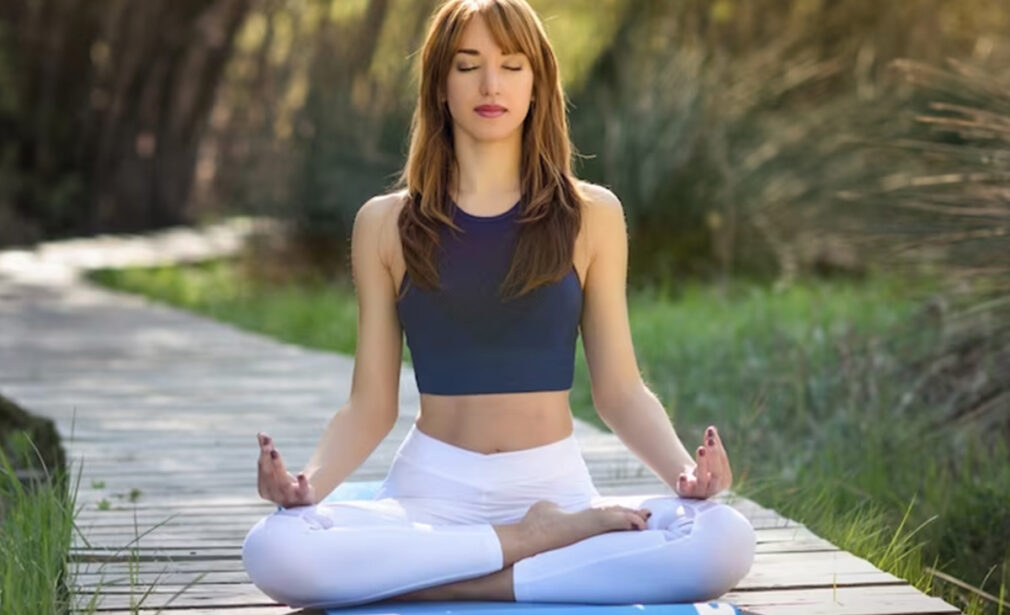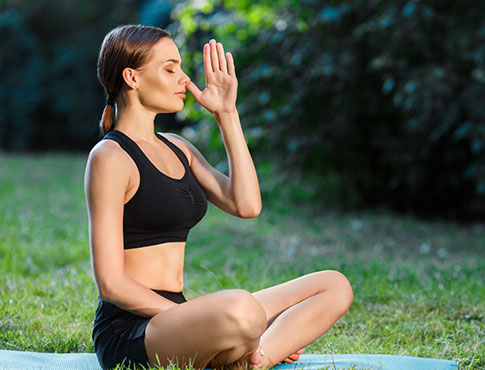Yoga Retreats In Rishikesh, India

Shiva Yoga Ashram Provides 3, 5, and 10-day yoga retreats in Rishikesh, India. Yoga retreats are an excellent means of starting over in life. To have a decent yoga and meditation retreat, you must first commit to your physical and mental well-being. Making your health a top priority can assist you in regaining your equilibrium and center if you lead a busy and stressful life.
Our yoga retreats are located beside the Ganga River in Rishikesh, India, tucked away from the bustle of the city and surrounded by verdant hills and peaceful Himalayan landscapes. Rishikesh, which is situated at the foot of the Himalayas, allows guests to fully enjoy the unspoiled environment.
For those who prefer adventure, it also provides plenty of opportunities for it; guests may select from a wide range of activities while there, including white water rafting, trekking, and camping beneath the stars. Shiva Yoga Ashram's yoga retreat in India is intended to give you perspective and rekindle your enthusiasm for life. Bring a habit from home that will help you stay in peak physical and mental health.
Why Choose Us For Yoga Retreat In India?
Course Overview
| Course Name | 2Yoga Retreat In Rishikesh, India |
|---|---|
| Level | Beginners, Intermediate, Or Advanced |
| Yoga Form | Multi-style |
| Duration | 3, 5, or 10 Days |
| Module | Residual + Daily Meals |
| Language | English & Hindi |
| Venue | Shiva Yoga Ashram |
| Location | Rishikesh, India |
Daily Schedule For Our Yoga Retreat
-
Wake Up
-
Yoga Cleansing
-
Mantra Chanting
-
Asana, Pranayama and Meditation
-
Breakfast
-
Ayurveda Classes
-
In-house Activities
-
Lunch
-
Asana and Meditation
Fee Details For Our Yoga Retreat In Rishikesh
Regardless of the month or the weather, all of our retreats take place all year round. Retreat lengths vary from three to ten days to accommodate our clients' realistic demands regarding time availability, situational escape, and health concerns. On Sundays, we advise our visitors to arrive earlier in the afternoon (before sundown) and depart after breakfast.

Things You Will Get From Our Yoga Retreat
Syllabus For 100 Hour Yoga Teacher Training
The 100-Hour YTTC in Rishikesh curriculum follows Yoga Alliance guidelines. Here is a detailed guide about the course and what you will learn from it. You will also study the fundamental kriyas, bandhas, and mudras. Mantras are also covered in this course. You will also learn about guided and mindfulness meditation from knowledgeable specialists. This yoga form promotes both physical and mental development. Each action is accompanied by one breath.
Asana-Hatha-Ashtanga Vinyasa
The purpose of mantra chanting in yoga is to generate vibrations and connect with the universe. Each mantra is special and rich with spiritual energy.
Sun Salutation
- Namaskarasana
- Urdhva Hastasana
- Padahastasana
- Eka Pada Prasaranasana
- Dwipada Prasaranasana
- Sashtanga Namaskarasana
- Bhujangasana
- Bhudarasana
- Eka Pada Prasaranasana
- Padahastasana
- Urdhva Hastasana
- Tadasana
Sitting Postures
- Malasana
- Bakasana
- Paschimottasana
- Purvottasana
- Marichayasana A
- Marichayasana C
- Janu Sisrasana A
- Parivartta JanuSirsana
- Trianga Mukhaika Pada Paschimottasana
- Krounchasana
- Bharadwajasana
- Gomukasana
- Ardha Matsyendrasana
- Akarna Dhanurasana
- Parighasana
- Ustrasana
- Baddha Konasana
- Upavistha Konasana
- Kurmasana/Suptha Kurmasana
Standing Postures
- Uttitha Trikonasana
- Parivratta Trikonasana
- Uttitha Parsvakonasana
- Parivratta Parsvakonasana
- Prasarita Padottanasana A
- Prasarita Padottanasana C
- Virbhadrasana A
- Virbhadrasana C
- Virbhadrasana B
- Ardha Chandrasana
- Vraksasana
- Garudasana
- Natarajasana
- Uttitha Hasta Padangusthasana B
- Uttitha Hasta Padangusthasana A
- Padangusthasana Padhastasana
- Padhastasana
Finishing & Closing Postures
- Bhunjasana
- Salabhasana
- Dhanurasana
- Sethu Bandhasana
- Urdhva Dhanurasana
- Pincha Mayurasana
- Vrischikasana
- Sirsasana
- Balasana
- Sarvangasana
- Halasana
- Karnapidasana
- Matsyasana
- Yoga Mudrasana
- Tolasana
- Shavasana
Meditation
Meditation as a practice has gained wide popularity due to its numerous benefits.
- Introduction of Meditation
- Origion & history of Meditation
- Breath awarness Meditation
- AUM chanting Meditation
- Trataka Meditation
- Dynamic Meditation
- Ajapa Meditation
- Antar Maun (Inner Silemce Meditation)
- Yoga Nidra
- Silence Practice
- Meditation Pose
Pranayama
Pranayama is the control of breath. The basic movements of pranayama are inhalation, retention of breath, and exhalation. “The yogi’s life is not measured by the number of days but by the number of his breaths,” says Iyengar
- Four Aspects of Pranayama.
- Natural Breathing
- Abdominal (or diaphragmatic) Breathing
- Thoracic Breathing
- Clavicular Breathing
- Yogic Breathing Nadi Shodhana Pranayama (psychic network purification)
- Sheetali Pranayama (cooling breath)
- Sheetkari Pranayama (hissing breath)
- Bhramari Pranayama (humming bee breath)
- Ujjayi Pranayama ( the psychic breath)
- Bhastrika Pranayama (bellows breath)
- Kapalbhati Pranayama (frontal brain cleansing breath)
- Moorchha Pranayama (swooning or fainting breath)
- Surya Bheda Pranayama (vitality-stimulating breath)
Bandhas
Students learn the technique of consciously blocking and unblocking energy flow to different parts of their body.
- Introduction to Bandhas
- Preparation for Bandhas
- Bandhas and the Granthis
- Benefits of Bandhas
- Jalandhara Bandha (Throat lock)
- Moola Bandha (Perineum contraction)
- Uddiyana Bandha (Abdominal contraction)
- Maha Bandha (The great lock)
Mudras
TYPES OF MUDRA
- Hasta ( Hand Mudras)
- Mana ( Head mudras)
- Kaya ( Postural mudras)
- Bandha ( Lock mudras)
- Adhara ( Perineal mudras)
- Prana is literally the “forward-moving air”.
- Apana is literally the “air that moves away”.
- Udana, literally the “upward moving air”.
- Samana is literally the “balancing air”.
- Vyana, literally the “outward moving air”.
- Introduction to Shatkarma
- Preparation for Shatkarma
- Benefits of Shatkarma
- Jala Neti (Nasal cleansing with water)
- Rubber Neti (Nasal cleansing with rubber)
- Vaman Dhauti (Regurgitative cleansing)
- Nauli (Abdominal massaging
- Sanatana Dharma
- Vedas
- Puranas
- The Four Goals of Life
- The Four Stages of Life
- The Vedic System of Duties
- The Six Systems of Indian Philosophy
- Patanjali’s Yog Sutras
- Citta Vritti
- Afflictions of the mind
- The Eight Limbs of Yog
- Stages of Samadhi
- The Six Yoga System
- Jnana Yoga
- Bhakti Yoga
- Karma Yoga
- Mantra Yoga
- Hatha Yoga
- Laya Yoga
- Raja Yoga
- How to do Yoga Nidra
- Benefits of Yoga Nidra
- Getting ready for Yoga Nidra
- Positive & conscious communication.
- Friendship and trust.
- Time management
- Qualities of a teacher
- Principles of demonstrating, observation, assisting, and correcting.
- Use of voice in class
- Mental & emotional preparation for teaching.
- Class Preparation
- Step-by-step class structure planning.
- Body Planes
- Joints
- Anatomical Movements
- Muscle & Posture
- Yoga & Posture
- Muscular System
- Spine
- Deformities of the spine
- Pelvic Region
- The Human Knee
- Tendon & Ligaments
- Rhomboids minor & major
- Supraspinatus Muscle
- Infraspinatus Muscle
- Subscapularis Muscle
- Teres Minor
- Deltoid
- Bicep brachii
- Tricep Brachii
- Pectoralis Minor
- Rectus Abdominus
- Trapezius
- Latissimus Dorsi
- Llipsoas
- Digestive System
- Circulatory System
- Respiratory System
- Nervous System
- Endocrine System
- Chakra
- Body Planes
- Joints
- Anatomical Movements
- Muscle & Posture
- Yoga & Posture
- Muscular System
- Spine
- Deformities of the spine
- Pelvic Region
- The Human Knee
- Tendon & Ligaments
- Rhomboids minor & major
- Supraspinatus Muscle
- Infraspinatus Muscle
- Subscapularis Muscle
- Teres Minor
- Deltoid
- Bicep Brachii
- Tricep Brachii
- Pectoralis Minor
- Rectus Abdominus
- Trapezius
- Latissimus Dorsi
- Llipsoas
- Digestive System
- Circulatory System
- Respiratory System
- Nervous System
- Endocrine System
- Chakra
- Demonstration
- Alignment
- Instructions
THE FIVE PRANA MUDRA
Satkarma Kriyas
Yogic cleansing exercises are important to learn how to incorporate your breath and meditate properly during the physical aspects of yoga. It also removes the blockages in the energy channels.
Yoga Philosophy
Yoga Philosophy is the Ashram of our yoga practice and is the key to earn yogic strength. Through the path of Vedanta Philosophy, you will establish a solid, well-rounded yoga practice.
Yoga Nidra
Yoga nidra, a Sanskrit term meaning "yogic sleep" is a deep relaxation technique and a form of meditation. Also called "psychic sleep," yoga nidra is a state between sleeping and waking. Through the path of Vedanta Philosophy, you will establish a solid, well-rounded yoga practice.
Teaching Methodology
A yoga teacher should efficiently perform the practical applications of class planning and preparation. At Adi Yoga School, our students will learn how to create a positive and peaceful class environment for an enjoyable and transformative experience.
Yoga Anatomy
Proper understanding of the physical body will help to prevent injury before, during and after practice. There are two kinds of yoga anatomy: physical and spiritual. Understanding both types is needed.
Yoga Physiology
Proper understanding of the physical body will help to prevent injury before, during and after practice. There are two kinds of yoga anatomy: physical and spiritual. Understanding both types is needed.
Teaching Pedagogy
Students will take turns practicing their teaching skills by performing in front of their peers and teachers.
